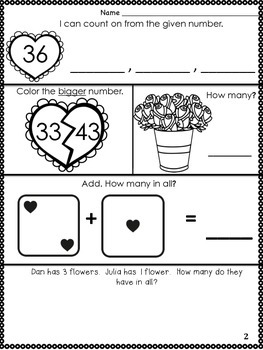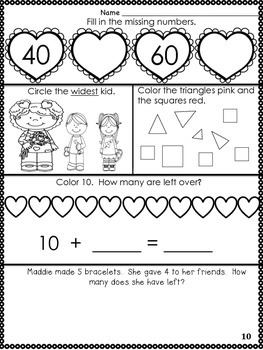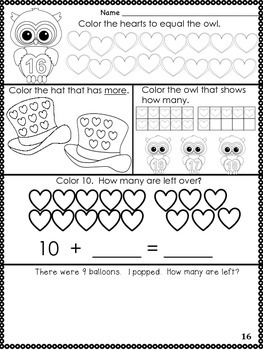Kindergarten February Math Journal
Cahill's Creations
8k Followers
Grade Levels
K
Subjects
Resource Type
Standards
CCSSK.CC.A.2
CCSSK.CC.A.3
CCSSK.CC.B.4
CCSSK.MD.A.2
CCSSK.NBT.A.1
Formats Included
- PDF
Pages
23 pages
Cahill's Creations
8k Followers
What educators are saying
Love using this for warm ups at the beginning of class or as independent work once they have completed the students have finished their other work.
Description
This 20 page math journal covers the Kindergarten Common Core Standards on a daily basis. It can be done in whole group, small group, as morning work, or homework.
Included:
*Missing numbers
*How many more to make 10
*Teen Numbers
*Shapes
*Measurement (taller/shorter/wider)
*Addition Word Problems
*Subtraction Word Problems
*Comparing Numbers and Quantities
*Counting on
*More, Less, Equal
Enjoy!
Check out my kindergarten journals for the entire year:
Kindergarten Math Journals All Year
This is part of my February Bundle:
February Bundle
★You might also like:
Addition PowerPoint Game
Included:
*Missing numbers
*How many more to make 10
*Teen Numbers
*Shapes
*Measurement (taller/shorter/wider)
*Addition Word Problems
*Subtraction Word Problems
*Comparing Numbers and Quantities
*Counting on
*More, Less, Equal
Enjoy!
Check out my kindergarten journals for the entire year:
Kindergarten Math Journals All Year
This is part of my February Bundle:
February Bundle
★You might also like:
Addition PowerPoint Game
Total Pages
23 pages
Answer Key
N/A
Teaching Duration
1 month
Report this resource to TPT
Reported resources will be reviewed by our team. Report this resource to let us know if this resource violates TPT’s content guidelines.
Standards
to see state-specific standards (only available in the US).
CCSSK.CC.A.2
Count forward beginning from a given number within the known sequence (instead of having to begin at 1).
CCSSK.CC.A.3
Write numbers from 0 to 20. Represent a number of objects with a written numeral 0-20 (with 0 representing a count of no objects).
CCSSK.CC.B.4
Understand the relationship between numbers and quantities; connect counting to cardinality.
CCSSK.MD.A.2
Directly compare two objects with a measurable attribute in common, to see which object has “more of”/“less of” the attribute, and describe the difference. For example, directly compare the heights of two children and describe one child as taller/shorter.
CCSSK.NBT.A.1
Compose and decompose numbers from 11 to 19 into ten ones and some further ones, e.g., by using objects or drawings, and record each composition or decomposition by a drawing or equation (e.g., 18 = 10 + 8); understand that these numbers are composed of ten ones and one, two, three, four, five, six, seven, eight, or nine ones.





